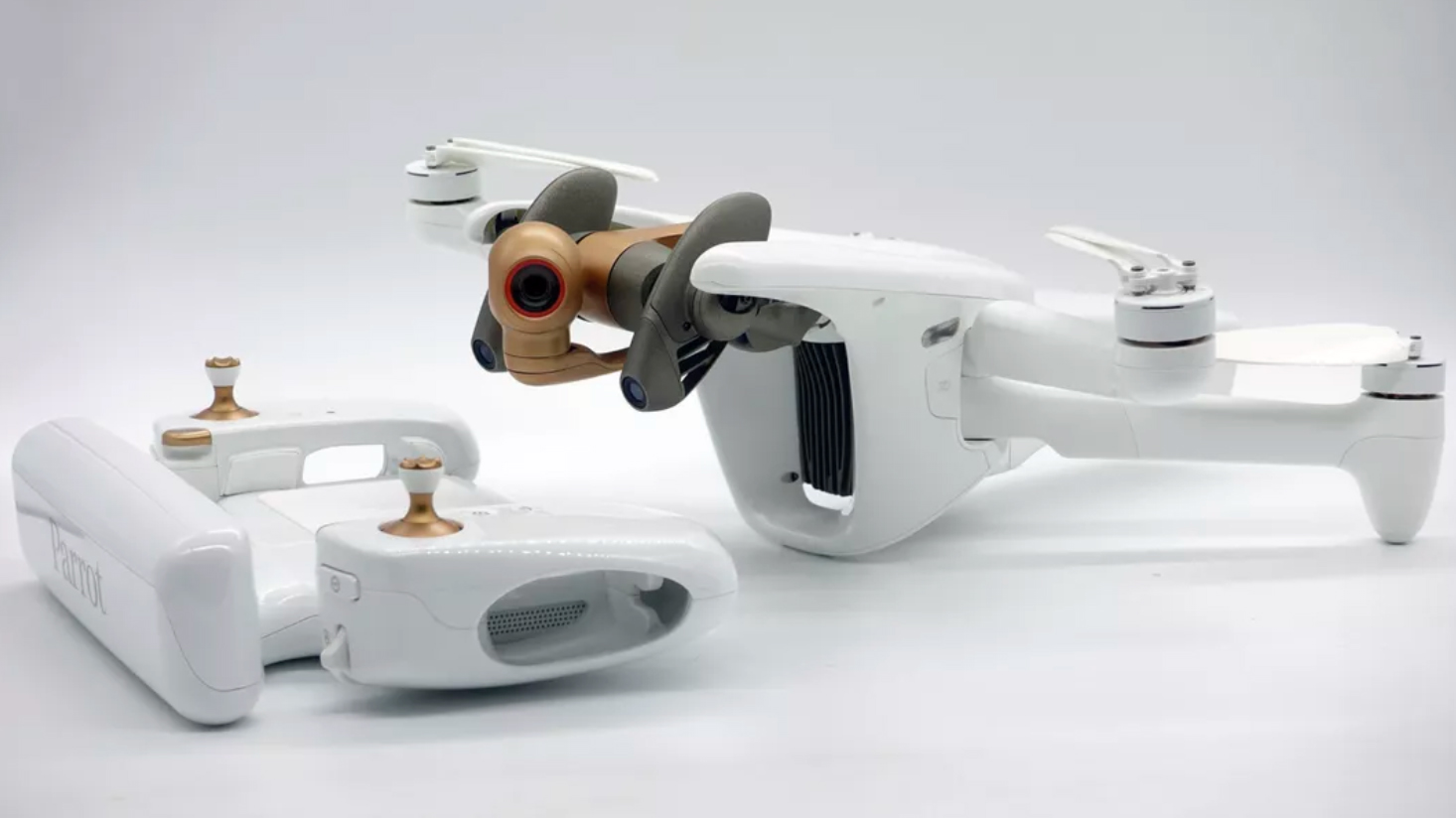The Parrot Anafi AI is a 4G-connected drone that looks like a basking shark
Also offers open source fun for developers

Parrot has announced an intriguing new drone called the Parrot Anafi AI, which it claims is the first 'robotic' 4G UAV (Unmanned Aerial Vehicle).
The Anafi AI has a few unusual features, including that 4G connectivity – which Parrot says helps the drone maintain a connection behind obstacles – and a unique design.
Rather than a basking shark, Parrot says the Anafi AI takes inspiration from the eyes of insects, which provide 360-degree vision without needing a smattering of sensors all over their body (which is the usual approach on most drones).
- These are the best drones you can buy right now
- Or check out our guide to the best beginner drones
- Read our in-depth DJI Air 2S review
Instead, either side of the Anafi AI's new 48MP camera are stereo cameras that look in the direction that you're shooting and claim to offer 360-degree obstacle detection. The 48MP camera is mounted on a three-axis gimbal, which allows it to look upwards and downwards at 90 degrees.
The other intriguing aspect of Parrot's new drone is its claims of being a "robotic platform", which refers to its open source nature. Using Parrot's new 'Air SDK', developers can put their own code and software directly on the drone, creating unique 'missions' that tap into all of its sensors and autopilot software.
Naturally, this means the Parrot Anafi AI is very much designed for professionals who are looking to do aerial mapping and photogrammetry, which is the process of creating 3D maps. Parrot says the benefit of using 4G is that pilots will be able to send their images directly to the cloud via an encrypted connection, rather than having to involve their computer.
While the drone isn't really designed for consumers, the Anafi AI does promise to open photogrammetry up to non-specialist fliers – and bring promising versatility, thanks to that open source software.
Get daily insight, inspiration and deals in your inbox
Sign up for breaking news, reviews, opinion, top tech deals, and more.
Flying colors
The original Parrot Anafi was a folding consumer drone, but for the past few years Parrot has focused exclusively on the professional drone space.
With a 48MP camera that can shoot 4K/60p video in HDR 10, take survey-grade stills, and claims to offer six-axis image stabilization (three-axis mechanical and three-axis electronic), the Anafi AI is a potentially interesting drone, so it's a shame that there's no consumer-facing version.
Still, it brings some interesting ideas that could yet make the move across into the consumer space. One is that 4G connectivity – while it brings its own limitations, such as not being available in remote areas, Parrot claims it's far more robust than traditional radio links and means the drone can be operated from any distance (assuming you have the qualifications and permission to do so).
Parrot says the Anafi AI won't need any kind of special subscription or contract, with pilots able to use any SIM card that's capable of sending data. And if your signal isn't great, Parrot says its software will quickly optimize the definition and frame-rate to your network quality.
So far, there's no pricing or release date for the Parrot Anafi AI, but it'll apparently be available in the "second half of 2021". Considering the Parrot Anafi USA, its previous enterprise drone, costs around $7,000 (about £5,060 / AU$9,330), it'll likely be a little pricier than the likes of the rumored DJI Mini SE.
- DJI ban: what it means for drone fans and the future of DJI
- Check out this outstanding 4K-capable drone

Mark is TechRadar's Senior news editor. Having worked in tech journalism for a ludicrous 17 years, Mark is now attempting to break the world record for the number of camera bags hoarded by one person. He was previously Cameras Editor at both TechRadar and Trusted Reviews, Acting editor on Stuff.tv, as well as Features editor and Reviews editor on Stuff magazine. As a freelancer, he's contributed to titles including The Sunday Times, FourFourTwo and Arena. And in a former life, he also won The Daily Telegraph's Young Sportswriter of the Year. But that was before he discovered the strange joys of getting up at 4am for a photo shoot in London's Square Mile.